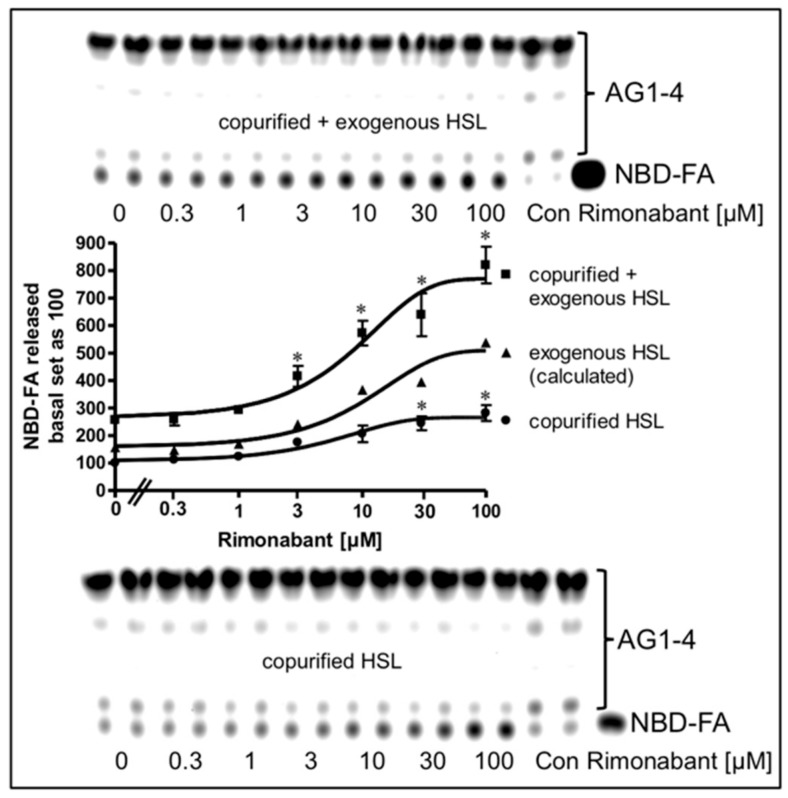Figure 10.
Stimulation of lipolysis in a cell-free system from Rimonabant-treated rat adipocytes. Primary rat adipocytes, which had been metabolically labelled with NBD-FA, were incubated (20 min, 37 °C) in the absence or presence of increasing concentrations of Rimonabant. Subsequently, LD were prepared from the washed adipocytes, reconstituted without (copurified HSL) or with partially purified rat adipocyte HSL (copurified + exogenous HSL)(see Materials and Methods) and then incubated (90 min, 30 °C). The organic phase of the chloroform/methanol/HCl-extract of the total incubation mixture was analyzed by TLC. The amount of NBD-FA lipolytically released from the NBD-FA-labelled AG1–4 and run in parallel to a synthetic NBD-FA marker (ma) was quantitatively evaluated by fluorescence imaging. Fluorogram of a typical experiment with TLC runs (only 1/5 of the volumes obtained from the total incubation mixtures of the “copurified + exogenous HSL” reactions were applied) in duplicate repeated two times; quantitative evaluation (mean ± SD) of the three different incubations with TLC analysis (corrected for the different volumes applied) in duplicate with ● calculated as difference (exogenous HSL) of the reaction containing and lacking exogenously added HSL. A blank value from a control reaction terminated immediately after the addition of HSL (copurified + exogenous HSL) or buffer (copurified HSL) was subtracted in each case. NBD-FA released in the absence of Rimonabant (basal) was set at 100 for each reaction containing or lacking exogenously added HSL. * p ≤ 0.05 for LD incubated with copurified plus exogenous HSL or copurified HSL alone between absence and presence of Rimonabant.

